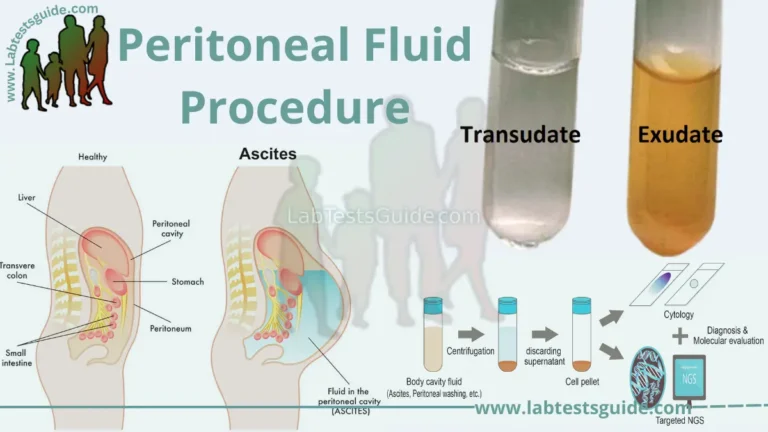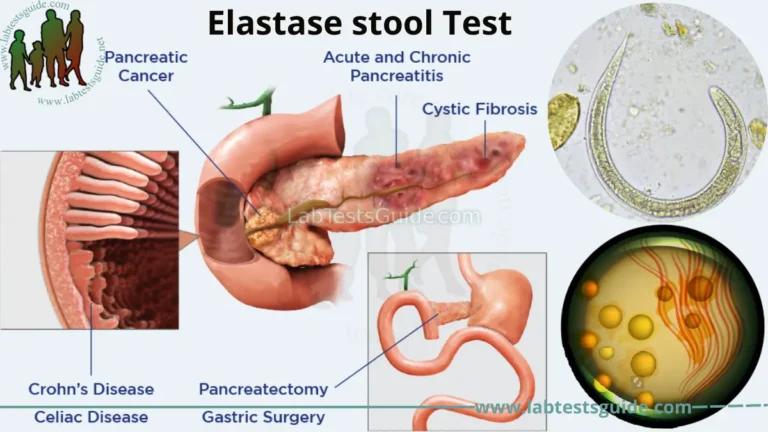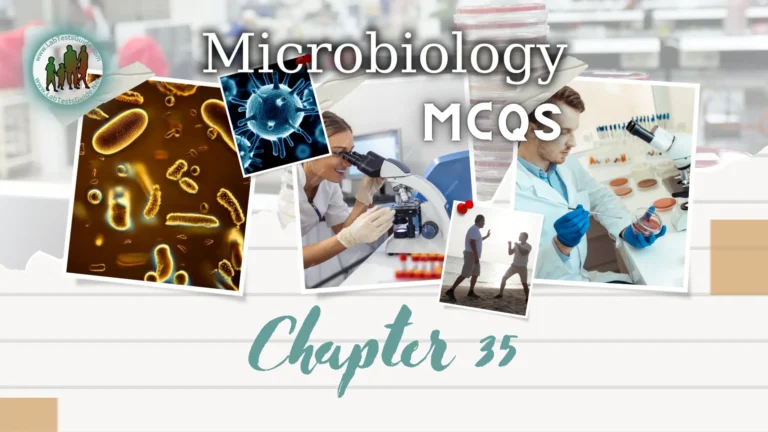Endo agar is a microbiological growth medium used in the laboratory to isolate and differentiate gram-negative bacteria, especially Enterobacteriaceae. It is a selective and differential medium, meaning that it inhibits the growth of some bacteria while allowing others to grow, and also allows the differentiation of different types of bacteria based on their ability to ferment lactose.

Introduction:
Endo Agar is a selective and differential culture medium used in microbiology for the isolation and identification of Gram-negative bacteria, particularly from the Enterobacteriaceae family. It was developed by bacteriologist Masanori Endo. The medium contains lactose, bile salts, and the pH indicator phenol red. Lactose fermentation by bacteria leads to a color change in colonies, allowing for differentiation between lactose fermenters and non-fermenters. Endo Agar is commonly used in clinical laboratories to detect enteric pathogens such as Escherichia coli and Salmonella species.
Purpose of Endo Agar:
- Isolation: Endo Agar is used to isolate Gram-negative bacteria, particularly members of the Enterobacteriaceae family, from mixed microbial samples.
- Selectivity: The medium contains bile salts, which inhibit the growth of Gram-positive bacteria. This selectivity allows for the preferential growth of Gram-negative organisms.
- Differentiation: Endo Agar helps in the differentiation of bacteria based on their ability to ferment lactose. Lactose-fermenting bacteria produce acid as a byproduct, causing colonies to turn pink/red due to the presence of the pH indicator phenol red. Non-fermenters typically form transparent or colorless colonies.
- Detection of enteric pathogens: Endo Agar is commonly used in clinical laboratories to detect and identify enteric pathogens such as Escherichia coli and Salmonella species, which are associated with gastrointestinal infections.
- Preliminary identification: The colony morphology and color changes observed on Endo Agar can provide preliminary information about the types of bacteria present in a sample, aiding in the initial identification of potential pathogens.
- Research and diagnostic purposes: Endo Agar is utilized in research studies and diagnostic procedures to facilitate the isolation, identification, and characterization of Gram-negative bacteria in various environmental, clinical, and food samples.
Composition of Indo Agar:
The composition of Endo agar varies depending on the manufacturer, but it typically contains the following ingredients:
- Peptones: These are complex organic compounds that provide nutrients for bacteria to grow.
- Disodium hydrogen phosphate: This is a buffering agent that helps to maintain the pH of the medium.
- Lactose: This is a sugar that is fermented by coliform bacteria.
- Sodium sulfite: This is an inhibitor of gram-positive bacteria.
- Fuchsin dye: This is a dye that reacts with acids produced by coliform bacteria to turn the colonies red.
- Agar-agar: This is a gelatinous substance that provides a solid substrate for bacteria to grow on.
| Ingredient | Quantity |
|---|---|
| Peptone | 10 g |
| Disodium hydrogen phosphate | 2 g |
| Lactose | 10 g |
| Sodium sulfite | 0.5 g |
| Fuchsin dye | 0.0025 g |
| Agar-agar | 15 g |
The exact concentrations of these ingredients may vary depending on the manufacturer and the intended use of the medium. For example, media that are used for the confirmation of coliform bacteria typically have a higher concentration of lactose than media that are used for the isolation of Salmonella species.
Principle of Indo Agar:
- The medium contains peptone which provides nitrogen, carbon, vitamins and minerals necessary for bacterial growth.
- Sodium sulfite and basic fuchsin make this medium selective in suppressing Gram-positive organisms.
- Lactose positive colonies exhibit a red color caused by the reaction of aldehyde with sodium sulfite and basic fuchsin.
- The development of a metallic shine occurs when the organism produces aldehydes with the fermentation of lactose. Bacteria that do not ferment lactose form clear, colorless colonies.
- Coliforms produce pink colonies on lactose fermentation while lactose non-fermenters produce colorless colonies on the medium.
- With Escherichia coli, this reaction is very pronounced as the fuchsin crystallizes, exhibiting a permanent greenish metallic sheen (fuchsin sheen) in the colonies.
- If the growth is colorless, beige, or not pink, lactose is not used and is likely a gram-negative noncoliform.
- If there is good growth that is pink/red, lactose is used and the bacteria is probably a Gram-negative coliform.
- If there is good pink/red growth that has a bright metallic sheen, lactose is used heavily and the bacteria is probably a Gram-negative coliform.
- (If there is little or no growth, remember that it is probably a gram-positive organism.)
Preparation of Indo Agar:
- Weigh out the following ingredients:
- Peptone: 10 g
- Disodium hydrogen phosphate: 2 g
- Lactose: 10 g
- Sodium sulfite: 0.5 g
- Fuchsin dye: 0.0025 g
- Agar-agar: 15 g
- Add the ingredients to a 1-liter Erlenmeyer flask.
- Add about 100mL (1 Liter)of distilled water to the flask and stir until the ingredients are completely dissolved.
- Heat the mixture over a hot plate until it comes to a boil.
- Once the mixture has come to a boil, remove it from the heat and let it cool for a few minutes.
- While the mixture is cooling, sterilize a 100-mL pour plate.
- Once the mixture has cooled to about 50°C, pour it into the sterile pour plate.
- Allow the agar to solidify in the pour plate.
- The agar is now ready to use.
Here are some safety precautions to take when preparing Endo agar:
- Wear gloves and a lab coat when working with agar.
- Avoid inhaling the powdered agar or the fuchsin dye.
- If you get agar or fuchsin dye on your skin, wash it off immediately with soap and water.
- If you get agar or fuchsin dye in your eyes, flush them with water for at least 15 minutes and seek medical attention immediately.
Procedure for Using Indo Agar:
- Prepare a fresh plate of Endo agar by pouring the medium into a sterile petri dish.
- Allow the agar to solidify in the petri dish.
- Using a sterile swab, collect a sample of the bacteria you want to test.
- Smear the sample onto the surface of the Endo agar plate.
- Incubate the plate at 37°C for 24-48 hours.
- Observe the plate for the growth of colonies.
Colonies of coliform bacteria will appear red on the Endo agar plate. Non-lactose-fermenting bacteria will not appear red.
Here are some additional tips for using Endo agar:
- Use a sterile swab to collect the sample. This will help to prevent contamination of the agar plate.
- Smear the sample thinly onto the surface of the agar plate. This will help to ensure that the colonies are well-separated and easy to observe.
- Incubate the plate at the correct temperature. This will help to ensure that the bacteria grow and produce the characteristic red color.
- Observe the plate for the correct amount of time. This will help to ensure that you have enough time to see the growth of colonies and to identify the different types of bacteria that are present.
Interpretation of Results:
| Appearance of Colonies | Microorganisms |
|---|---|
| Red | Lactose-positive: |
| Red with a permanent metallic sheen | Escherichia coli |
| Red to reddish, hemispherical, mucoid | Enterobacter aerogenes, Klebsiella and others |
| Colourless, clear | Lactose-negative |
| Organisms | Growth |
| Klebsiella aerogenes | Good-luxuriant growth; pink colonies |
| Enterococcus faecalis | Poor growth; small pink colonies |
| Escherichia coli | Good-luxuriant growth; pink to rose red with a metallic sheen |
| Klebsiella pneumonia | Good-luxuriant; pink mucoid colonies |
| Proteus vulgaris | Good-luxuriant growth; Colourless to pale pink colonies |
| Pseudomonas aeruginosa | Good-luxuriant growth; Colourless, irregular colonies |
| Salmonella Typhi | Good-luxuriant growth; Colourless to pale pink |
| Enterobacter cloacae | Good growth; Pink colonies |
| Salmonella Typhimurium | Good-luxuriant growth; colorless colonies |
| Salmonella Enteritidis | Good-luxuriant growth; colorless colonies |
| Shigella flexneri | Good-luxuriant growth; colorless colonies |
| Enterobacter aerogenes | Good to excellent growth; Green, metallic sheen |
Clinical Applications and Significance:
here are some clinical applications and significance of Endo agar with brief descriptions:
- Confirmation of coliform bacteria: Endo agar is commonly used to confirm the presence of coliform bacteria in drinking water and food samples. Coliform bacteria are a group of gram-negative bacteria that are found in the intestines of warm-blooded animals. They are also found in soil and water. Coliform bacteria are not necessarily harmful, but their presence in drinking water or food can indicate that other, more harmful bacteria may also be present.
- Isolation of Salmonella species: Endo agar can also be used to isolate Salmonella species from food and clinical samples. Salmonella species are a group of gram-negative bacteria that are commonly associated with food poisoning. They can cause a variety of symptoms, including fever, diarrhea, and vomiting. Salmonella species can be isolated from Endo agar by incubating the plate at 37°C for 24-48 hours. Colonies of Salmonella species will appear red on Endo agar, while colonies of other bacteria will appear clear or colorless.
- Differentiation of lactose-fermenting and non-lactose-fermenting bacteria: Endo agar is a differential medium, which means that it can be used to distinguish between different types of bacteria based on their growth and appearance on the medium. Coliform bacteria that ferment lactose will produce acids and aldehydes, which react with the fuchsin dye in the medium to turn the colonies red. Non-lactose-fermenting bacteria will not produce acids or aldehydes and will therefore appear colorless or clear on Endo agar.
- Selectivity of gram-negative bacteria: Endo agar is a selective medium, which means that it only allows the growth of certain types of bacteria. The sodium sulfite in Endo agar inhibits the growth of gram-positive bacteria, so only gram-negative bacteria will grow on the medium.
- Study of the ecology of gram-negative bacteria: Endo agar can also be used to study the ecology of gram-negative bacteria. For example, Endo agar can be used to track the presence of coliform bacteria in different environments, such as in water, soil, and food. Endo agar can also be used to study the growth and survival of gram-negative bacteria under different conditions, such as at different temperatures or in the presence of different chemicals.
Endo agar is a versatile and important tool in microbiology. It is a simple and reliable medium that can be used to isolate and identify a wide range of gram-negative bacteria. It is commonly used in the confirmation of coliform bacteria in drinking water and food samples. It is also used in the isolation of Salmonella species and other gram-negative bacteria. Endo agar can also be used to study the ecology of gram-negative bacteria.
Limitation and Considirations:
here are some limitations and considerations of Endo agar:
- Not all gram-negative bacteria are lactose-fermenting: Some gram-negative bacteria, such as Pseudomonas aeruginosa, do not ferment lactose and will not turn red on Endo agar.
- Some gram-positive bacteria can grow on Endo agar: The sodium sulfite in Endo agar can inhibit the growth of some gram-positive bacteria, but not all. For example, some strains of Staphylococcus aureus can grow on Endo agar.
- The color of the colonies on Endo agar can be affected by other factors: The color of the colonies on Endo agar can be affected by the presence of other bacteria, such as yeasts and molds, as well as by the pH of the medium.
- Endo agar is not a definitive identification test: Endo agar can be used to identify coliform bacteria and Salmonella species, but it is not a definitive identification test. Additional tests, such as biochemical tests and microscopic examination, are needed to confirm the identity of the bacteria.
Overall, Endo agar is a versatile and useful tool in microbiology. However, it is important to be aware of its limitations and considerations when using it.
Here are some additional considerations when using Endo agar:
- Endo agar should be stored at room temperature and protected from light.
- Endo agar should be used within 3 months of opening.
- Endo agar should be discarded if it shows signs of contamination, such as mold or a foul odor.
- Endo agar should be used in a clean and sterile environment.
- Persons handling Endo agar should wear gloves and a lab coat.
- Endo agar should be disposed of properly according to local regulations.
Conclusion:
Endo agar is a differential and selective medium that is used to isolate and identify gram-negative bacteria. It contains lactose, a sugar that is fermented by coliform bacteria. When coliform bacteria ferment lactose, they produce acids and aldehydes, which react with the fuchsin dye in the medium to turn the colonies red. Non-lactose-fermenting bacteria will not produce acids or aldehydes and will therefore appear colorless or clear on Endo agar. The sodium sulfite in Endo agar inhibits the growth of gram-positive bacteria, so only gram-negative bacteria will grow on the medium.
Home | Blog | About Us | Contact Us | Disclaimer
Possible References Used







